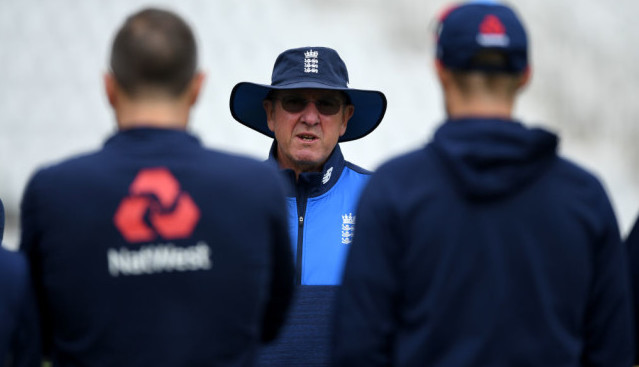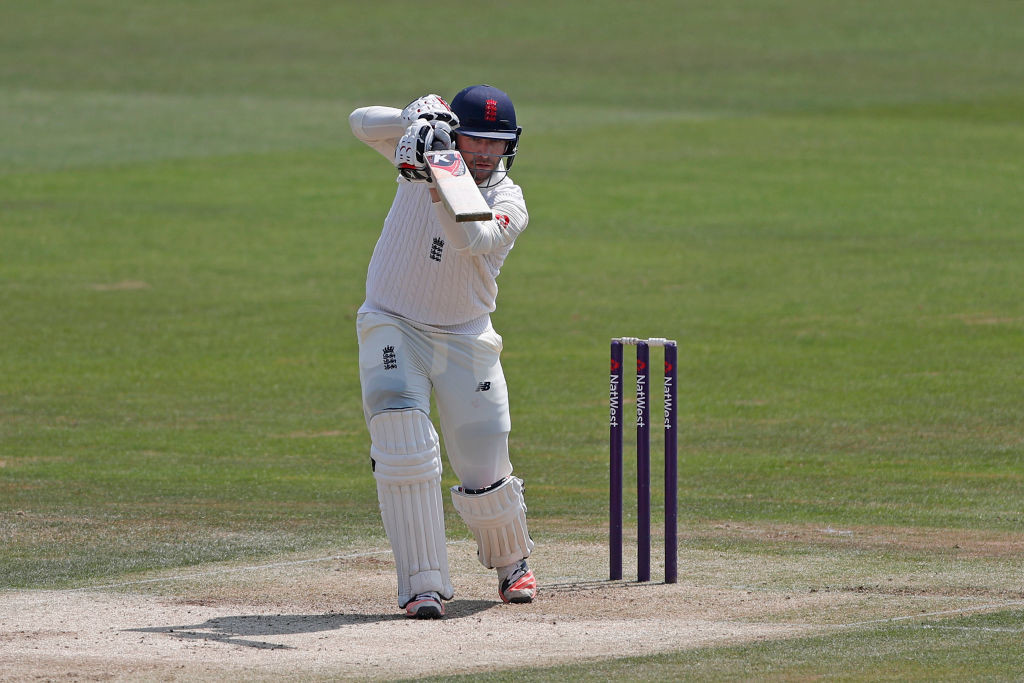
Mark Stoneman had been scoring runs at such a prodigious rate in county cricket that it was become irresistible to ignore him. Unless you’re the head coach of England.
Trevor Bayliss made this staggering admission, about the country’s highest-scoring, England-qualified opener ahead of selection for the first Test of the summer: “To be honest, I haven’t seen him play. He’s done some hard yards up at Durham.”
Let’s give Bayliss a smidgeon of credit. He had been busy preparing and coaching during the Champions Trophy – although he is hardly a hands-on presence – and was out in Abu Dhabi to watch the domestic North v South series between England hopefuls.
At that time he told The Guardian that he would spend the first three rounds of the season ‘driving around having a look’, yet he clearly did not even get as far as south west London.
By week four of the County Championship, Stoneman, inspired by his move south from Durham, had cracked two centuries with Surrey.
Meanwhile, the awkwardly upright Keaton Jennings had been bowled three times down in the bowels of Division Two for the team that Stoneman had left.

Next man up: Mark Stoneman has played for England Lions
Now maybe Jennings did indeed deserve another chance after making a century on debut against India last year, and you’d have hoped that contact time with England would have helped iron out his deficiencies.
But for Bayliss not to have at least done his homework on the domestic game is surely a failure of a key part of his remit.
If he could not have gone to The Oval for a day or two, why not ask for some film and splice together the footage of when Stoneman was on strike? All in an afternoon’s work.
Maybe then Bayliss could offer more than platitudes such as ‘he’s scored a lot of runs’ and ‘he’s done his time’, the type of commentary that is mindlessly rattled off in pundits’ chairs the world over.
If Bayliss does not have at least a working knowledge on the next men to potentially step up for England, then he has no business in a selection meeting.
The Australian had never coached in the country before accepting the role of head coach and his last two jobs had been in T20 cricket. Maybe, just maybe, one of his first tasks should have been to catch up in the red-ball department.
Two years later here England are, still scrabbling around for top-order answers after just 11 Test victories from their last 28 – including the 3-2 Ashes victory over Australia, two years in the books.
Let’s be clear: Bayliss has had a positive effect on English cricket. He has taken the most talented limited-over players England has ever assembled and given them space to breathe, no matter how pitifully their Champions Trophy campaign finished.
The evidence, though, is that he is inflexible in his approach between white-ball cricket and Test cricket, from which a positive mindset can lurch dangerously towards the reckless.
Since Trevor Bayliss took over as England head coach England have defended 28% of their deliveries v pace - the fewest by any team. #EngvSA
— The Cricket Prof. (@CricProf) July 17, 2017
And if the players he is familiar with continue, time and time again, to fail in the longer format then he must step outside of that bubble and figure out how the personnel and play style can be fixed.
Chopping and changing players is not necessarily the answer, as the next man to open the batting will be the 12th that is stepped out alongside Alastair Cook since Andrew Strauss’ retirement in 2012.
But an appreciation of county cricket, the talent funnel with all of its oddities, strengths and flaws, would be a starting point for understanding the problem.
If all this sounds an overreaction to a Test series finely poised at one victory apiece, I warned – alongside numerous others – that the cracks in the batting order at Lord’s would likely be exposed again.
No team, certainly not with the resources that English cricket have, should be bowled out twice at home inside 97 overs and defeated by a margin of 340 runs.
Bayliss called the performance a ‘shocker’ but it was all too depressingly familiar, and it is high time for England’s head coach to show a little more desire to get to the root of it once and for all.